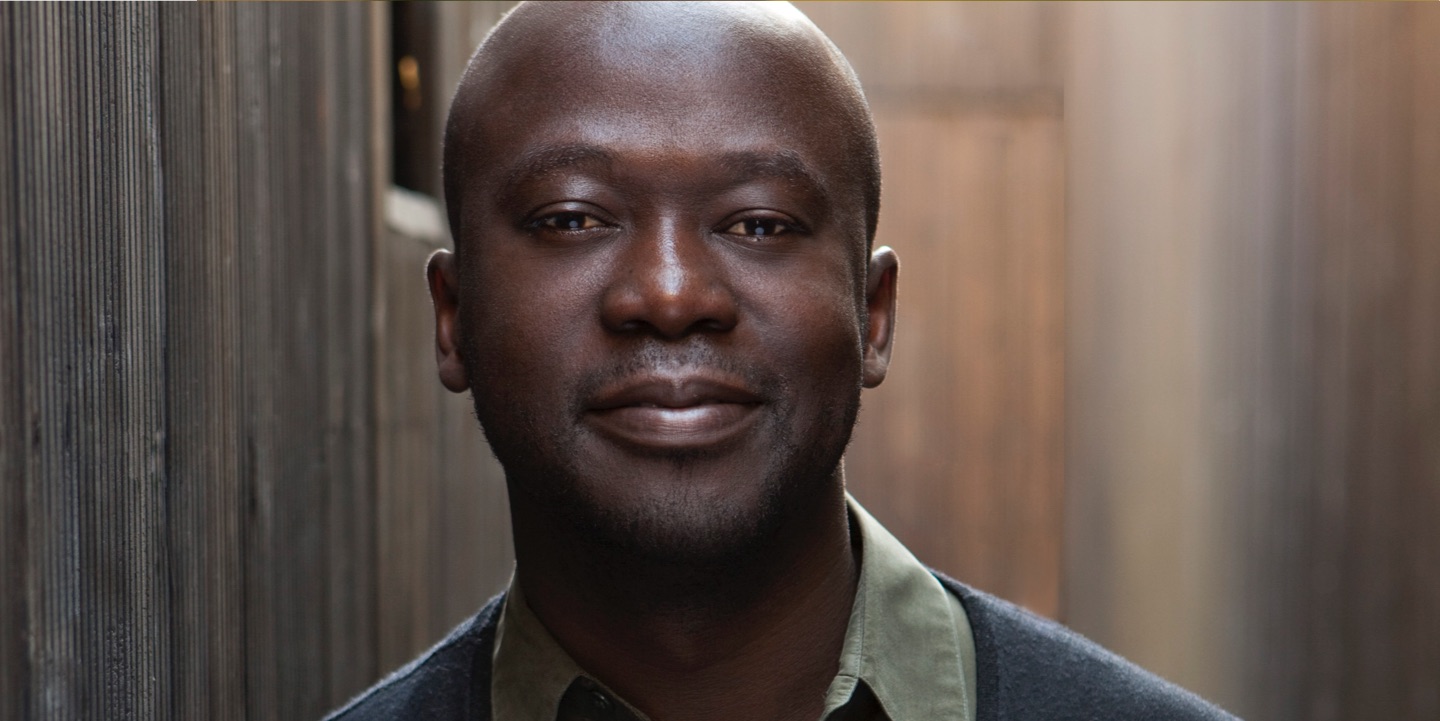Q&A with Sir David Adjaye
On his A’18 keynote, place-making, & sustainability
He’s a leading architect of his generation, one of Time’s most influential people, and the architect behind landmark projects that are making a difference in cities and communities across the globe. His approach is intimate and deeply connected to place, history, materials, and context. Here, David Adjaye discusses a range of topics and shares a first look at his Day 1 keynote on Thursday, June 21.

Select projects
The National Museum of African American History and Culture (Washington, DC)
Arena, 2015 Venice Biennale (Venice)
Aishti Foundation (Beirut, Lebanon)
The Nobel Peace Center in Oslo (Norway)
Proenza Schouler Store (New York)
San Francisco Shipyard (San Francisco)
70-73 Piccadilly (London)
Sugar Hill (New York)
Gwangju Pavilion (Gwangju, Republic of Korea)
Dirty House (London)
Moscow School of Management SKOLKOVO (Moscow, Russia)
The Washington Collection for Knoll
Double Zero, Moroso Collection
Q. Let’s start with what you’re going to talk about during your Day 1 keynote. Tell us more.
I’m excited to have this opportunity to explore diverse public work projects I’ve been doing in three distinctive urban contexts across three continents: North America, Europe, and Africa. While each address their unique contexts very specifically, I believe they each speak broadly to incredibly important issues that are inherent in public buildings: Access, representation, and ownership. These projects, which touch on issues like the meaning of nationhood, remembrance and memorial, and narratives of identity, to me are compelling examples of architecture’s capacity to speak to pressing societal concerns and to operate as a tool to shape better cities not just for some, but for all, citizens.
Q. What does building mean for you right now?
Buildings for me represent opportunities of agency, transformation, and empowerment. There have been moments where buildings have been seen like artifacts, but I believe we are now really beginning to understand them as sites of negotiation. With that, we are beginning to embrace design’s capacity to edify and break down this idea that good design should be for the exclusive benefit of the elite.
I believe the conversation is broadening on every front, in terms of whose voices and perspectives we validate as practitioners, as critics, as users. The dialogue between design and use is getting more complex and nuanced, which I believe is a very positive thing.
Q. Why should sustainability be a whole philosophy and not just a material approach?
Ultimately, I believe this hinges on an empathic relationship with context. Sustainability is ultimately about a celebration of the specificities—the geography, climate, and culture—of its surroundings.
Vernacular or traditional architecture can offer incredible insight into how to adapt to and live within even the most severe climates. When research forms the foundation of the experimentation in your design process, you’ll always be rooted in a real relationship with the place in which you are working. That relationship cannot be fabricated; when it’s authentic, sustainable practices often become logical extensions of the design rather than late-stage impositions.
Q. You’ve said before that buildings “belong to yet diverge from their contexts.” How does that influence your approach to place-making?
Each of my projects begins with a rigorous investigation of the context, which involves looking at the histories, cultures, climate, and geography of a place. This process draws out the narratives of place that inform the design. I’m interested in continuing, rather than replicating, these narratives.
This means harnessing 21st century innovations and technologies to reveal the next evolution of these narratives of place. The designs will be harmonious while also offering something distinctive.
I think this is clear in the design for the Moscow School of Management SKOLKOVO, which for me was really a search for the essence of the Constructivist diagram. The design emerged from various regional ideas, including strategies by Malevich and certain thoughts by Tatlin. Because of this, there is a familiar quality to the design even though there is no similar building in the canon.
Q. In what other ways does place-making influence your work?
Architects need to embrace experimental and innovative place-making strategies in the face of challenges like increased density and changing patterns of life. We must be incredibly exploratory and open minded about what a residential or commercial project really means at this particular moment.
As we become a more globalized world and people from different places move to different cities for economic or cultural reasons, the narrative of place becomes very important. Because of migration and the speed of information, I believe it has become even more important to tell those stories in those places.
Q. What do you hope your legacy will be?
I very much hope that I will be thought of as part of a tradition of practitioners who were concerned with architecture’s relationship to society and culture broadly. For me, architecture is as much about notions of freedom and how we interact as it is about types and materiality. I hope that my buildings can become part of an infrastructure of increased access, democratized opportunity, and harmonious expression of difference.

